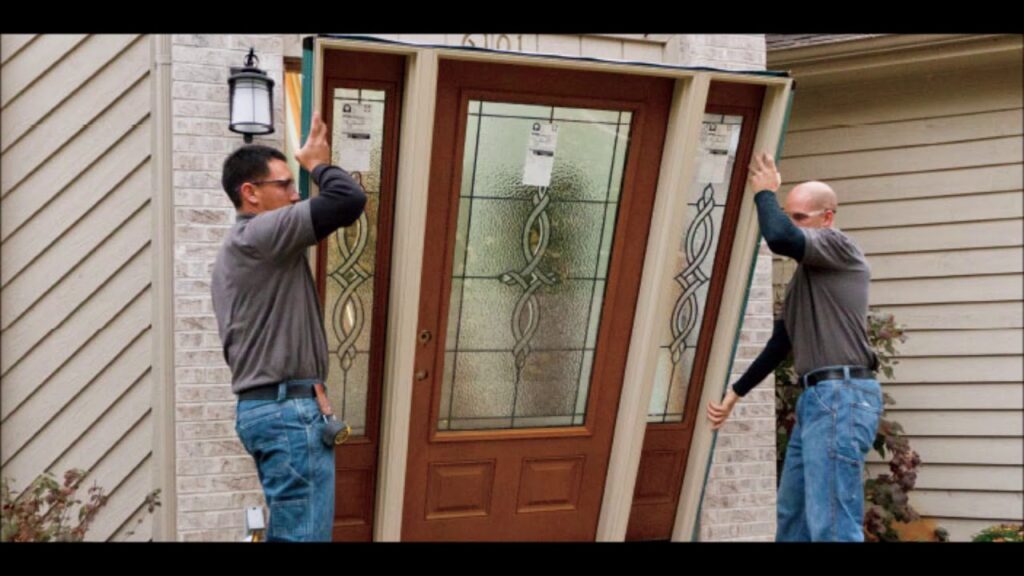How Proper Door Installation Improves Energy Efficiency in Your Home

When it comes to making your home more energy-efficient, many homeowners think about insulation, windows, and HVAC systems. While those are crucial, one often overlooked element is door installation. A well-installed door can have a significant impact on your home’s energy efficiency, comfort, and even long-term savings on utility bills.
Doors are more than just entry points — they are barriers that separate the interior of your home from the outside environment. If they are not installed correctly, gaps, leaks, and misalignments can allow heated or cooled air to escape, making your home work harder to maintain a comfortable temperature. Proper door installation ensures that your doors perform their intended function, improving energy efficiency and overall comfort.
In this article, we’ll explore the ways proper door installation enhances energy efficiency, the common problems caused by poor installation, and how professional installation can save you money and stress in the long run.
1. Preventing Air Leaks and Drafts
One of the most immediate ways that a properly installed door improves energy efficiency is by eliminating air leaks. Even a small gap between the door and its frame can allow cold air to enter in the winter or hot air to seep in during summer. This forces your heating and cooling systems to work harder, leading to higher energy consumption and increased utility bills.
How Proper Door Installation Helps:
-
Precision fitting: Professionals ensure that the door fits snugly within the frame, leaving no gaps.
-
Sealed edges: Expert installers apply weatherstripping around the edges of the door to prevent air leakage.
-
Tight thresholds: The threshold at the bottom of the door is adjusted to create a solid seal, blocking drafts.
A door that closes perfectly and seals tightly acts as a barrier against unwanted air transfer, reducing energy loss and keeping your indoor temperature consistent.
2. Enhancing Thermal Insulation
The material and installation of a door play a critical role in thermal insulation. Even energy-efficient doors will underperform if they are not installed correctly. Poor installation can create weak spots where heat easily escapes or enters.
Key Benefits of Proper Installation:
-
Even pressure distribution: Ensures that the door is fully in contact with the weatherstripping and frame for optimal insulation.
-
Reduced thermal bridging: Prevents air gaps that can create “thermal bridges,” where heat bypasses insulation.
-
Maintains door integrity: Properly hung doors maintain their shape and do not warp, which could otherwise compromise insulation.
Professional door installation ensures that your door retains its energy-efficient properties, helping your home stay warm in winter and cool in summer.
3. Minimizing Energy Loss Through Door Hardware
Even minor hardware issues can affect energy efficiency. Misaligned hinges, locks, or handles can prevent a door from closing completely, leaving gaps that allow air to pass through.
How Proper Installation Addresses Hardware:
-
Correct alignment: Professionals ensure that hinges, locks, and handles are perfectly aligned so that the door closes flush with the frame.
-
Secure fastenings: Tightened screws and reinforced hardware prevent sagging, which can create gaps over time.
-
Optimized operation: A properly installed door opens and closes smoothly, ensuring consistent sealing.
By addressing hardware during installation, your door functions efficiently, sealing the home against energy loss while maintaining smooth operation.
4. Reducing the Strain on Heating and Cooling Systems
A poorly installed door can make your HVAC system work overtime. Every gap, leak, or misalignment forces your heating or cooling system to compensate, which increases energy usage and wear on the equipment.
How Proper Door Installation Helps:
-
Maintains consistent indoor temperature: Proper sealing keeps conditioned air inside, reducing the need for the HVAC system to cycle frequently.
-
Decreases energy consumption: With less strain on your system, your energy bills drop, and your HVAC system lasts longer.
-
Enhances home comfort: Even airflow and temperature distribution create a more comfortable living environment.
A professionally installed door contributes to energy efficiency not only directly through insulation but also indirectly by reducing the demand on your heating and cooling systems.
5. Protecting Against Moisture and Weather Damage
Air leaks aren’t the only energy efficiency issue caused by poor installation. Moisture entering through gaps or misaligned doors can damage insulation, compromise thermal efficiency, and increase the likelihood of mold growth.
How Professional Installation Helps:
-
Proper weatherproofing: Installers use high-quality caulking and sealants to block moisture from entering your home.
-
Durable thresholds and sills: Correctly fitted thresholds prevent water from seeping underneath doors.
-
Long-term protection: By avoiding moisture damage, your insulation remains effective, and your energy-efficient door performs as intended.
By keeping moisture out, a properly installed door maintains both the energy efficiency and the longevity of your home’s structure.
6. Maintaining Energy-Efficient Door Features
Modern doors often come with energy-saving features such as insulated cores, thermal breaks, and multi-layered glass panels. These features can only perform optimally if the door is installed correctly.
How Proper Installation Preserves Efficiency:
-
Supports door structure: Prevents warping that can compromise insulation.
-
Ensures airtight fit: Allows weatherstripping and seals to function effectively.
-
Protects glazing units: Correctly installed glass panels retain their insulating properties.
Professional door installation ensures that all design elements meant to improve energy efficiency function as intended.
7. Increasing Home Value Through Energy Efficiency
Energy-efficient homes are increasingly in demand. Proper door installation contributes to a well-insulated, secure, and comfortable home, which can increase resale value.
Homebuyers often look for:
-
Energy-saving features: Tight seals and insulated doors reduce utility costs.
-
Modern, well-maintained installations: Professionally installed doors signal quality construction.
-
Overall home performance: A well-installed door improves comfort, security, and aesthetics.
Investing in professional installation not only saves money on energy bills but also enhances your property’s market appeal.
8. Avoiding Costly Mistakes
DIY door installation might seem like a cost-saving solution, but improper installation can lead to long-term problems such as:
-
Warping or misaligned doors
-
Air and water leaks
-
Security vulnerabilities
-
Increased energy bills
Hiring a professional ensures the job is done right the first time, preventing expensive repairs, adjustments, or replacements in the future.
9. Professional Knowledge and Tools
Proper door installation requires specialized tools and expertise. Professionals come equipped with:
-
Laser levels for precise alignment
-
Planers for adjusting door fit
-
High-quality sealants and weatherstripping materials
-
Knowledge of local building codes and energy standards
Their experience allows them to anticipate potential issues and deliver a precise, energy-efficient installation that a typical DIY attempt might miss.
10. Long-Term Comfort and Efficiency
At the end of the day, the primary goal of professional door installation is to create a comfortable, energy-efficient home. Well-installed doors:
-
Keep indoor temperatures consistent
-
Reduce drafts and air leaks
-
Lower energy bills
-
Extend the lifespan of HVAC systems
-
Protect against moisture and weather damage
By investing in professional installation, you’re ensuring long-term comfort, efficiency, and peace of mind.
Conclusion
Proper door installation is a critical component of an energy-efficient home. From preventing drafts and air leaks to supporting the long-term performance of insulated doors, professional installation makes a tangible difference in comfort, cost savings, and overall home value.
While DIY installation may seem tempting, the risks of improper fitting — including higher energy bills, moisture damage, and reduced security — often outweigh the initial savings. Hiring a professional ensures precision, durability, and maximum energy efficiency.
A well-installed door is more than just a functional entryway — it’s a smart investment in your home’s comfort, security, and energy performance. By prioritizing expert door installation, you can enjoy the benefits of a more efficient and comfortable home for years to come.

